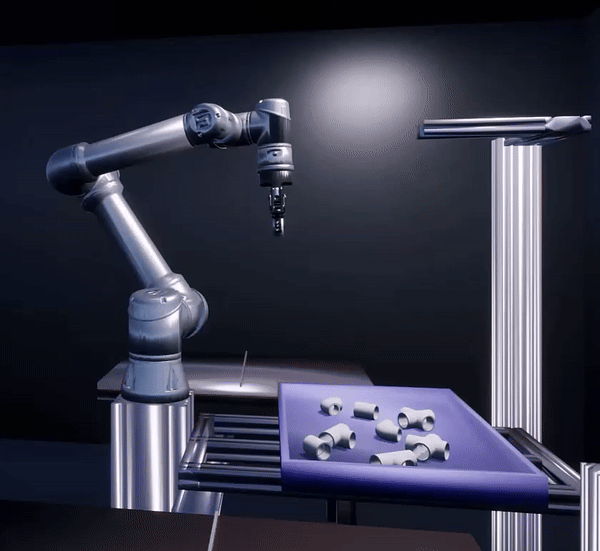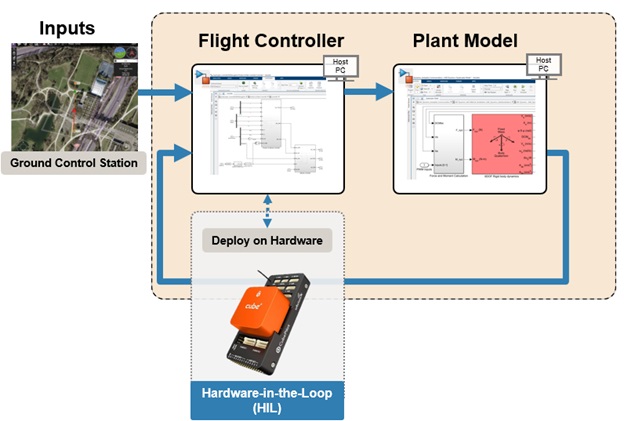Crafting the Robots of Tomorrow: The Power of Robot Simulation with MATLAB and Simulink
Recently, George Chowdhury, an industry analyst of robotics from ABI Research, interviewed me on the significance of robotics simulation, particularly using MATLAB and Simulink, for his report on “Robotics Software: Simulation, Virtual Commissioning, and Emerging Innovation”. This blog post is inspired by the comprehensive discussion with George.
Why Robot Simulation Is Important: Robot simulation stands at the forefront of robotics development, offering a sandbox for innovation without the constraints of the physical world. It’s a critical practice that allows engineers to explore the boundaries of what’s possible, pushing the limits of robotics autonomy design, automated testing, and photorealistic simulations. The integration of simulation in the development process enables the early detection of design flaws, optimization of system functionality, and verification of system performance, ensuring that robots perform as anticipated in real-world scenarios.
Overcoming Challenges in Robot Simulation: Incorporating simulation into continuous integration pipelines presents its set of challenges, requiring simulations to be seamlessly integrated into development cycles. However, the benefits far outweigh the hurdles, with robot simulation playing a crucial role in all stages of the development process and the entire product life cycle.

Bin picking cobot simulation in Unreal Engine using Robotics System Toolbox and Simulink 3D Animation.
The Role of MATLAB and Simulink in Robotics Simulation: MATLAB and Simulink have become instrumental in the field of robot simulation, providing a comprehensive suite of tools for Model-Based Design. This approach facilitates the creation of a digital twin of the robotics system, allowing for multidomain simulation within a single environment. With MATLAB, developers can model their robotics system using Simscape and Robotics System Toolbox, crafting a digital representation that becomes the core of simulation efforts. Here’s how MATLAB and Simulink transform simulation:
- Digital Twin Creation: The ability to model complex robotics systems accurately for detailed analysis and verification.
- Multidomain Simulation: Testing different aspects of robot functionality in a unified space to ensure comprehensive performance evaluation.
- Photorealistic Simulation: Leveraging Unreal Engine’s capabilities through MATLAB and Simulink 3D Animation™ to train AI models within highly realistic environments.
- Automated Testing: MATLAB supports automated testing within Model-Based Design, streamlining the validation process against system requirements.
- Code Generation: Facilitating early and continuous testing and verification, easing the transition from simulation to real-world deployment.
- Integration and Co-simulation: The capability to incorporate in-house code and use third-party software within the Simulink environment for enhanced realism.
George Chowdhury’s recent report underscores the critical role of simulation in advancing robotics technology. “The importance of tools like MATLAB and Simulink in overcoming robot simulation challenges, reducing deployment and development times, and ultimately unlocking the efficiency gains that automation promises,” he remarks.
It’s clear that simulation is not just a tool but a cornerstone of innovation, ensuring the creation of more sophisticated, reliable, and versatile robotic systems.
For further exploration on this topic, including George Chowdhury’s detailed report and our documentation, please refer to the following resources:


Simulation is more than a technological advancement; it’s a pathway to the future of robotics.
- カテゴリ:
- Robotics Simulation









コメント
コメントを残すには、ここ をクリックして MathWorks アカウントにサインインするか新しい MathWorks アカウントを作成します。